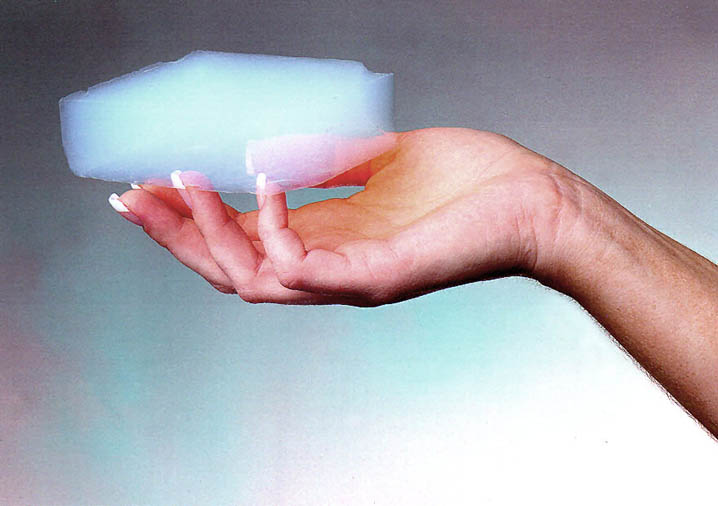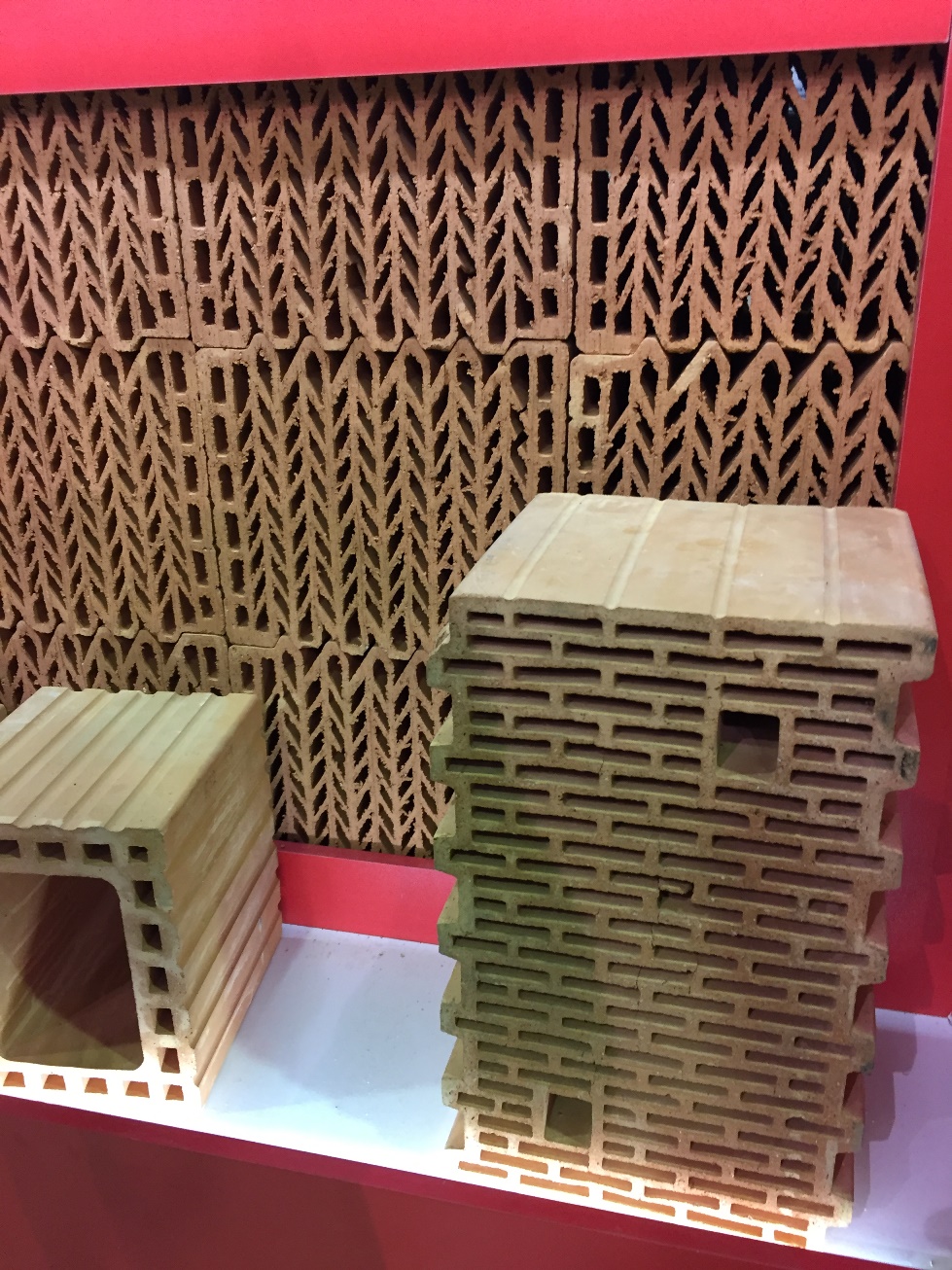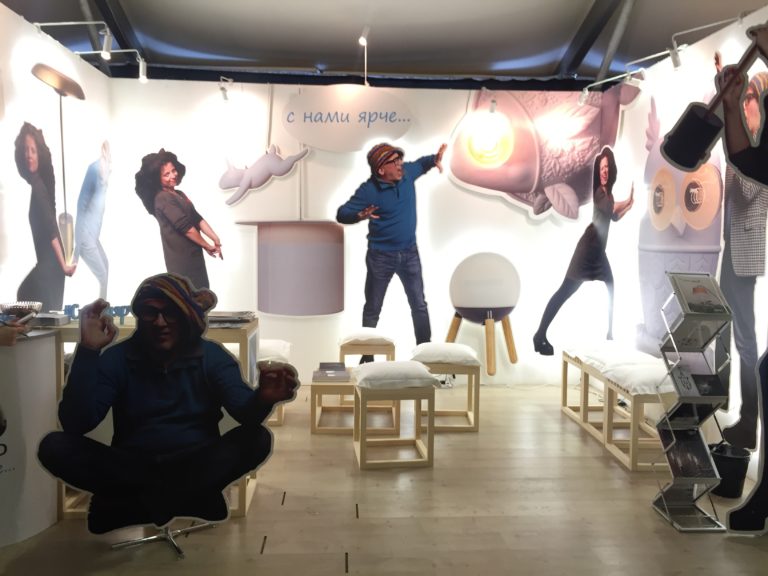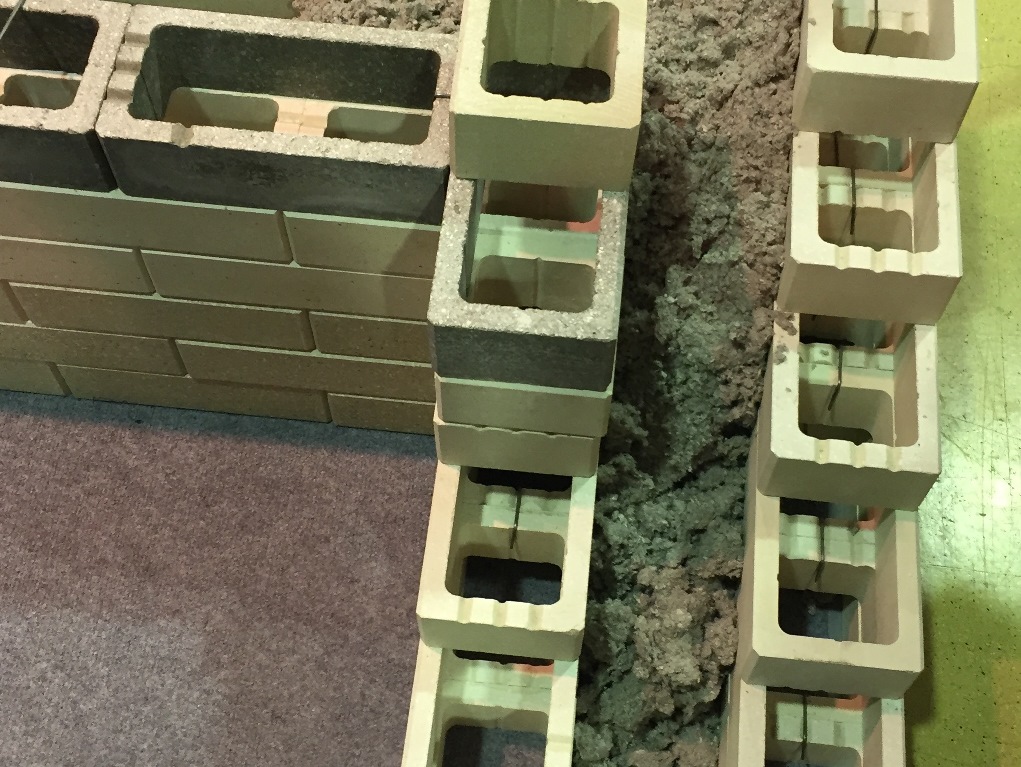Have you ever felt like you are already living in the future? Building materials are becoming more sophisticated and unusual, which sometimes makes the buildings constructed from them look like the creations of aliens. WorldBuild365 decided to share four stories that should get everyone's attention in 2017.
Shotcrete: concrete that protects
A team of researchers from the University of Nebraska-Lincoln has developed an interesting novelty that could provide a reliable and inexpensive way to protect electronic equipment from electromagnetic radiation. The brainchild of Professors Chris Tuan and Lim Nguyen, Shotcrete conductive concrete has the ability to absorb and reflect electromagnetic waves of both artificial and natural origin.
Professors Chris Tuan and Lim Nguyen (Photo: University of Nebraska-Lincoln).
During the research, the standard concrete filler was replaced by magnetite, a natural mineral with pronounced ferromagnetic properties that absorbs electromagnetic radiation like a sponge. Carbon and metal components were also added to the concrete to enhance the effect.

Application of Shotcrete to the exterior of the building. (Photo: University of Nebraska-Lincoln)
At first, Nguyen and Tuan investigated the use of conductive concrete for deicing sidewalks, roads, runways, etc. But later it turned out that its reflective properties also perfectly protect electronic devices indoors from damage by external electromagnetic impulses.
Shotcrete is convenient because, in particular, it can be applied to walls by spraying, so the protection of existing buildings promises to be simple and quick.
Airgel insulation
The name "airgel" can be misleading: in fact, these are extremely porous solids. Their production is a complex high-tech process: all the liquid is removed from the gel by drying under special conditions, as a result of which a material is formed that is 80-99% air. Due to this composition, aerogels have the lowest thermal conductivity of all solids.

This is ideal thermal insulation, you might think, and you will certainly be right. Many manufacturers have already relied on aerogels, positioning them as an extremely effective and, moreover, environmentally friendly alternative to traditional thermal insulation materials.
In terms of energy efficiency of thermal insulation, aerogels are four times superior to fiberglass and almost eight times superior to polypropylene. It is also important that aerogels have already received a silver cradle-to-cradle award from McDonough Braungart Design Chemistry for insignificant environmental damage caused by their production.
Although the share of this technology in the industry has not been very noticeable so far, it looks like it will see rapid growth from 2017. It is estimated that by 2020 its market size could reach $ 612.4 million.
The section presents new items of the construction market, which have proven themselves well throughout their existence.
In this article we will consider: what is liquid thermal insulation? What are the advantages of liquid insulation? What are the disadvantages of liquid insulation? And finally, what are the reviews about liquid insulation? Liquid thermal insulation in its appearance is a creamy mastic, which should be applied to the surface, previously cleaned of dirt from dust, with a roller or brush. Liquid insulation is a mixture of several chemical substances: glass ceramics, dioxides, latex mixtures and microspheres filled with discharged air. Liquid thermal insulation is actively used today to insulate walls and facades of buildings, as well as to improve the thermal insulation properties of pipelines. Advantages of liquid thermal insulation The advantages of liquid thermal insulation have led to its active use for wall insulation and [...]
Last Updated: November 11, 2015 - 09:19
Foam glass is a material developed in the USSR back in the 30s. Initially, the material was planned to be used in floating structures, but after a certain time it was discovered that it has excellent sound and thermal insulation. How is foam glass produced? Foam glass production consists in industrial processing of glass broken and granulate. First of all, the raw materials that have arrived are ground with mills in a mixture with a substance - a blowing agent. Then, under the influence of heat in the furnace, the glass particles soften and sinter. The gas emitted during baking swells the mass, resulting in a cellular structure. After that, the finished material is sawn into blocks and packaged. Manufacturers sell foam glass mainly in the construction markets. There are several types of foam glass: block [...]
Last Updated: December 18, 2015 - 08:41
Interest in historically established interior styles has never completely faded away. Marble plaster, a material known since ancient times, is excellent for finishing facades and indoors. This type of plaster mixture is made on the basis of acrylic copolymers in the form of an aqueous emulsion. The main filler of marble plaster is chips and marble dust. In addition to the filler and the binder, the plaster mix includes: Preservatives; Solvent; Modifying additives (antiseptics, biocidal and water-repellent substances). Decorative marble plaster can be made using mixed compositions that differ from pure marble in greater resistance to mechanical and chemical influences. One of the most popular compositions is granite-marble. Color spectrum decorative plaster currently not limited [...]
Last Updated: May 18, 2015 - 15:09
Silicate brick, like any other building material, has its advantages and disadvantages. It is the ratio of positive and negative properties of this material largely determines the scope of its use. How high-quality silicate brick is strictly regulated by GOST 379-95. Production of sand-lime brick Production of sand-lime brick is carried out using quartz sand and air lime. At the same time, 90% of the total raw material mass is sand. Accordingly, 10% is lime and some other components that affect the color finished product and its strength characteristics. White silicate brick is obtained by semi-dry pressing. This method allows you to obtain high-quality material of the required density. The average weight of solid silicate brick is 4.2-5 kg. There is also a hollow silicate one-and-a-half brick, inside [...]
Updated: March 24, 2015 - 11:42
Clinker brick has recently gained even more popularity, since it has become fashionable to use it not only for external wall cladding, but also for interior decoration in interiors. It can be called one of the highest quality types of bricks, although the technology of its production has been known to mankind since ancient times. Properties of clinker bricks Clinker bricks are characterized by high strength, since their density is high. This is achieved by firing the clay mass at high temperature... Due to the high level of density, a large amount of water is excluded from entering the brick, which leads to a long life of the product. After all, it is the penetration of water that causes the most severe destruction of the brick. Besides the fact that such a brick is not afraid of moisture, it also [...]
Last Updated: March 18, 2015 - 20:26
Ceramic brick, or as it is also called red, is made mainly from clay, into which several additives are introduced. According to the technology, the last operation in brick production is thermal annealing in furnaces. Ceramic brick, the price of which is characterized depending on its size, the presence of voids and technical properties... Depending on the size of ceramic bricks, they are distinguished: single, thickened, modular sizes, "euro". Depending on the presence of voids, the brick is divided into: solid, hollow. According to technical and thermal and technical properties, ceramic bricks are divided into two main types: efficient, ordinary. The production of ceramic bricks is characterized by one of the main characteristics of the finished product, and its nominal applicability: for load-bearing and enclosing structures [...]
Last Updated: March 18, 2015 - 20:25
Aerated concrete is artificial stone, the structure of which is porous, due to which the weight of this material at a high level of strength is rather low. Environmental cleanliness and safety for humans give them additional benefits. Due to its operational and technological characteristics, aerated concrete is used in construction. The structural properties of the material combine the advantages of wood and stone. Therefore, aerated concrete houses are distinguished by easy construction, fire safety, environmental friendliness, soundproofing, high reliability and frost resistance. Advantages of aerated concrete B construction industry aerated concrete and foam concrete (foam block) are gaining more and more popularity. Both of these materials refer to aerated concrete or, as it is more commonly called, aerated concrete. But aerated concrete has a number of advantages that make it more in demand. This material […]
Updated: November 9, 2015 - 23:59
Heat insulating materials are used to preserve heat in houses and buildings for various purposes. Insulation isover (Isover) of Finnish origin has a high quality and efficiency, tested in different climatic zones. Isover, the price of which is very different from competitors, is used for thermal insulation of floors, walls, ceilings, as well as floors and roofs. Insulation Isover (Isover), specifications: thermal conductivity, air permeability, sound insulation, vapor permeability, flammability (marked by GOST 30244-94 as a non-combustible material with the NG marking). Advantages of isover heaters: High-quality thermal insulation properties. Fireproof material. High hydrophobic properties. During production, water-repellent additives are added to the composition of the heaters, which ensures high moisture resistance. High sound insulation. High operating temperature range. Harmless to human health. Not susceptible to the spread of mold, mildew and bacteria. Easy to install and assemble. […]
Updated: April 8, 2015 - 11:27
During the construction of various structures, to protect equipment, air ducts and heat pipelines, rockwool insulation, which was developed by the Danish company Rockwool, is often used. This insulation is made of mineral basalt wool... The main advantages of Rockwool insulation The characteristics of Rockwool insulation are such that this material, when used in construction, provides: good thermal insulation; fire safety; excellent sound insulation; resistance to loads; hydrophobicity; environmental friendliness. Due to the low coefficient of thermal conductivity, rockwool insulation well insulates the room from cold and heat. Material from which they are made different kinds rockwool products, does not melt even at a temperature of 1000 degrees, so this material is completely non-combustible. The properties of rockwool insulation are such that it attenuates noise by an average of 50 decibels. The fibers of the material are located [...]
Updated: January 20, 2015 - 17:31
Waterproofing and vapor barrier materials protect construction Materials from wear, dampness, fungi and bacteria, keep people healthy. Isospan has gained wide popularity as a material that simultaneously performs several functions. Isospan functions: Isospan waterproofing protects structures from moisture ingress. Isospan vapor barrier increases the energy-saving properties of the insulation, protects house structures from saturation with vapors that penetrate from the premises. Waterproofing prevents moisture and water vapor from entering the building. Reflective insulation increases the thermal resistance of the roof. All these qualities are needed in the construction of buildings and structures. Isospan types: Existing species Isospana is suitable in different cases, since its main assortment has 14 positions. Polymer Isospan A protects elements of floor structures and insulation from gusts of wind, condensation, atmospheric moisture. […]


DOMESTIC BUILDING MATERIALS / 18th specialized exhibition / 24-27 jan. 2017
 Although the exhibition is called building materials, in fact more than 70% of participants are manufacturers building bricks or ceramic blocks and facing bricks (clinker). Other wall materials are very limited. And if the absence of wood as a class is explained by the presence of many specialized highly specialized activities, then the fact of the minimal presence of other materials once again confirms the low prevalence of alternative technologies.
Although the exhibition is called building materials, in fact more than 70% of participants are manufacturers building bricks or ceramic blocks and facing bricks (clinker). Other wall materials are very limited. And if the absence of wood as a class is explained by the presence of many specialized highly specialized activities, then the fact of the minimal presence of other materials once again confirms the low prevalence of alternative technologies.
In addition, this is the first year when manufacturers from Crimea appeared as participants with a relatively unusual for the Moscow region finishing material facades - with facing slabs made of shell rock.
But what really piqued the interest were two new items:
1. KERAKAM CERAMIC BLOCK with the highest thermal insulation
TO  kerakam company, one of the top 5 leading Russian manufacturers of ceramic blocks, presented a new development - a more advanced block with low thermal conductivity. Previously, the most popular was a block 51 cm thick (thermal conductivity coefficient 0.16 W / m * C) and a price of 124 rubles / piece. The novelty has surpassed him - with a wall thickness of 30 cm and a price of 89 rubles / piece. managed to reduce the coefficient. thermal conductivity up to 0.08 W / m * C.
kerakam company, one of the top 5 leading Russian manufacturers of ceramic blocks, presented a new development - a more advanced block with low thermal conductivity. Previously, the most popular was a block 51 cm thick (thermal conductivity coefficient 0.16 W / m * C) and a price of 124 rubles / piece. The novelty has surpassed him - with a wall thickness of 30 cm and a price of 89 rubles / piece. managed to reduce the coefficient. thermal conductivity up to 0.08 W / m * C.
The unit has passed all tests and is currently at the stage of obtaining a certificate. But it is already clear today that this is a big step forward that the technologists have managed to achieve: the length of the air path has been increased by changing the structure of the thermal chambers. And also due to the new masonry lock, the probability of blowing vertical seams is reduced to almost zero.
In the photo in the foreground is a 51 cm ceramic block of the old model, and in the background is Kerakam SuperTermo30.
2. BRICK HOUSE TECHNOLOGY FOR FAST STONE FENCES
The technology itself, according to the manufacturer, is used for the construction of residential, including multi-storey, and commercial real estate. But for the countryside, its use is more interesting as a fencing technology. A light and aesthetic option (without the use of masonry mixture), which we will recommend to customers in the first place - for the construction of a facade stone fence. A wide range of colors, high speed of construction, stylish appearance on both sides - these are the advantages that our customers will appreciate.


To be continued! Subscribe to our company news in



